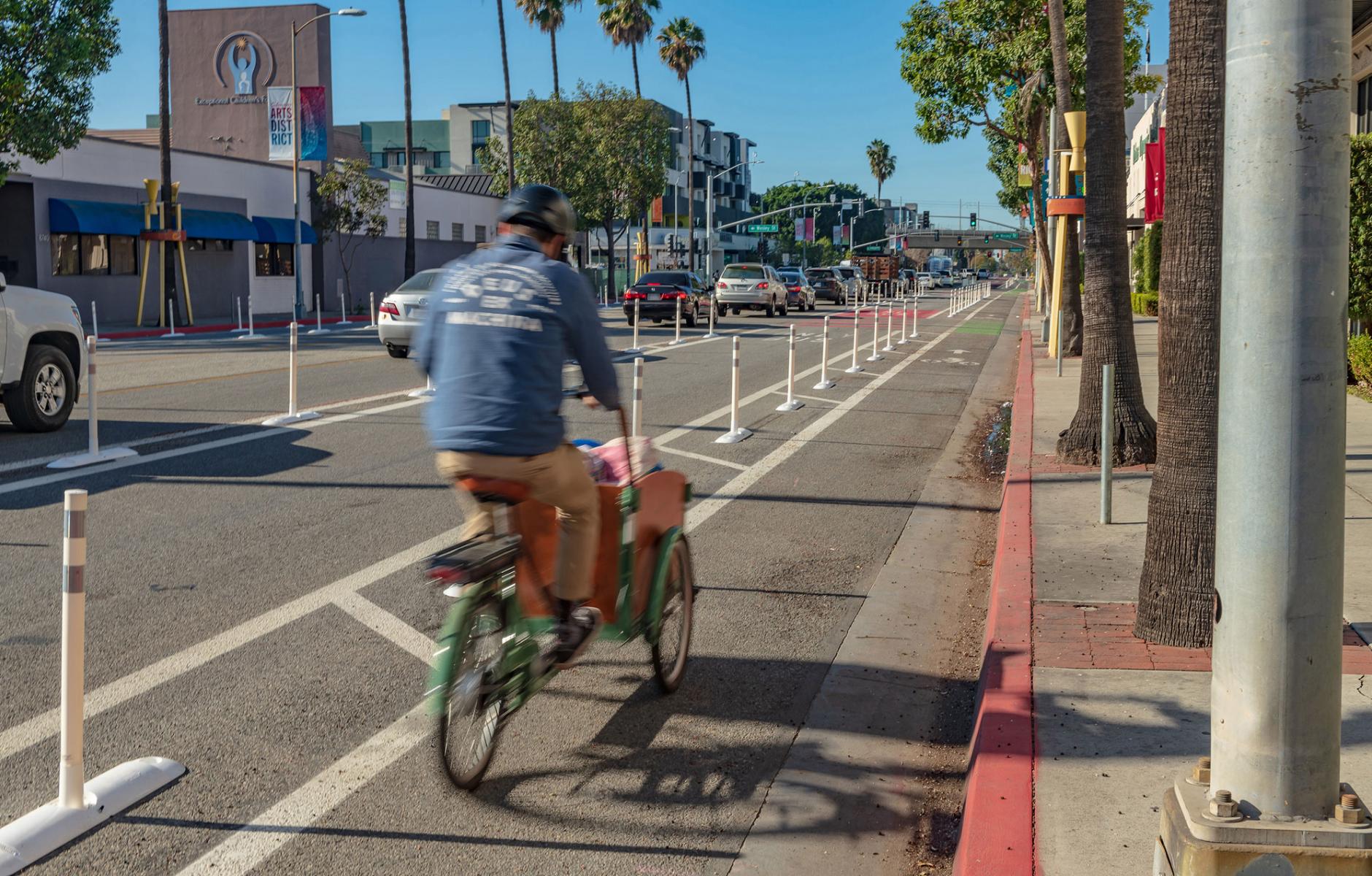
Street transformation is first for LA
Update: The Culver City council voted to scale back the Move Culver City project by combining the bus lane and protected bike lanes into a single lane, and add back a lane for cars. However, supporters of the Tactical Urbanism redesign are pursuing a legal challenge to the decision.
Move Culver City transformed the streetscape on a 1.3-mile corridor using “quick build” techniques associated with Tactical Urbanism. The project created multi-modal space quickly and inexpensively to prioritize pedestrians, bicyclists, and transit riders. Bus ridership, cycling, and pedestrian activity rose substantially on what was previously a car-centric suburban corridor.
Move Culver City was completed in November of 2021, at the height of the pandemic, when outdoor civic space was urgently needed. The project included a shared mobility lane and other bicycle, pedestrian, and transit-related improvements along Culver and Washington boulevards in downtown Culver City, a municipality in Los Angeles County.
Transforming a major artery often takes a decade or more, and such retrofits are rare. This project was completed less than a year after conception. “For New Urbanism to continue to be successful in the country, we have to find a way to accelerate the retrofit of streets designed for cars,” observes Street Plans Collaborative, which was hired by the city to design and implement the tactical mobility lane and worked closely with Sam Schwartz Engineering and T.Y. Lin International.
Culver City transformed its downtown over three decades from a low-density warehouse district to one of the most vibrant and walkable places in the LA region. The demographically diverse city is a movie production center, home to Sony Pictures Studios. A new Metro rail line runs through downtown, and urban building frontages were promoted. Only the corridor in question did not keep up with these changes until recently, the design team explains.

Since installation, data has shown a growth in bus ridership of 52 percent, cycling activity has risen 32 percent, and walking has increased 18 percent on the corridor, according to the design team. Despite a 56 percent reduction in the space allocated for cars, vehicle speeds and volumes have not changed significantly.
The Tactical approach allows adjustments to fine-tune the design and respond to issues discovered after implementation. More than 350 comments were received following construction, which resulted in redesigning a tricky intersection and optimizing traffic signals along the corridor to reduce delays.
The design team describes the new design as “humane, people-centered main street.” The project includes curb extensions, protected bike lanes, and physically separate bus lanes through the city's heart. On-street parking and one general-purpose travel lane were removed in both directions.
“Move Culver City is remarkable because it was the first to accomplish what has not yet been done in Los Angeles to date—a radical and aggressive reallocation of street space from cars to pedestrians, bicyclists, and transit riders,” notes Street Plans Collaborative.

The project includes notable elements, including custom hardwood bus boarding platforms. These allow for boarding at grade and enable bicycles to cross the platforms.
“This attention to design included the conversion of more than 30,000 square feet of street space into curb and sidewalk space through the use of an asphalt art mural,” Street Plans notes. “The mural, called Scenes of Ballona Creek, stretches over 30 different sites and is one of the largest pavement murals in North America.”
Planning and design are underway to transform another section of the corridor.




